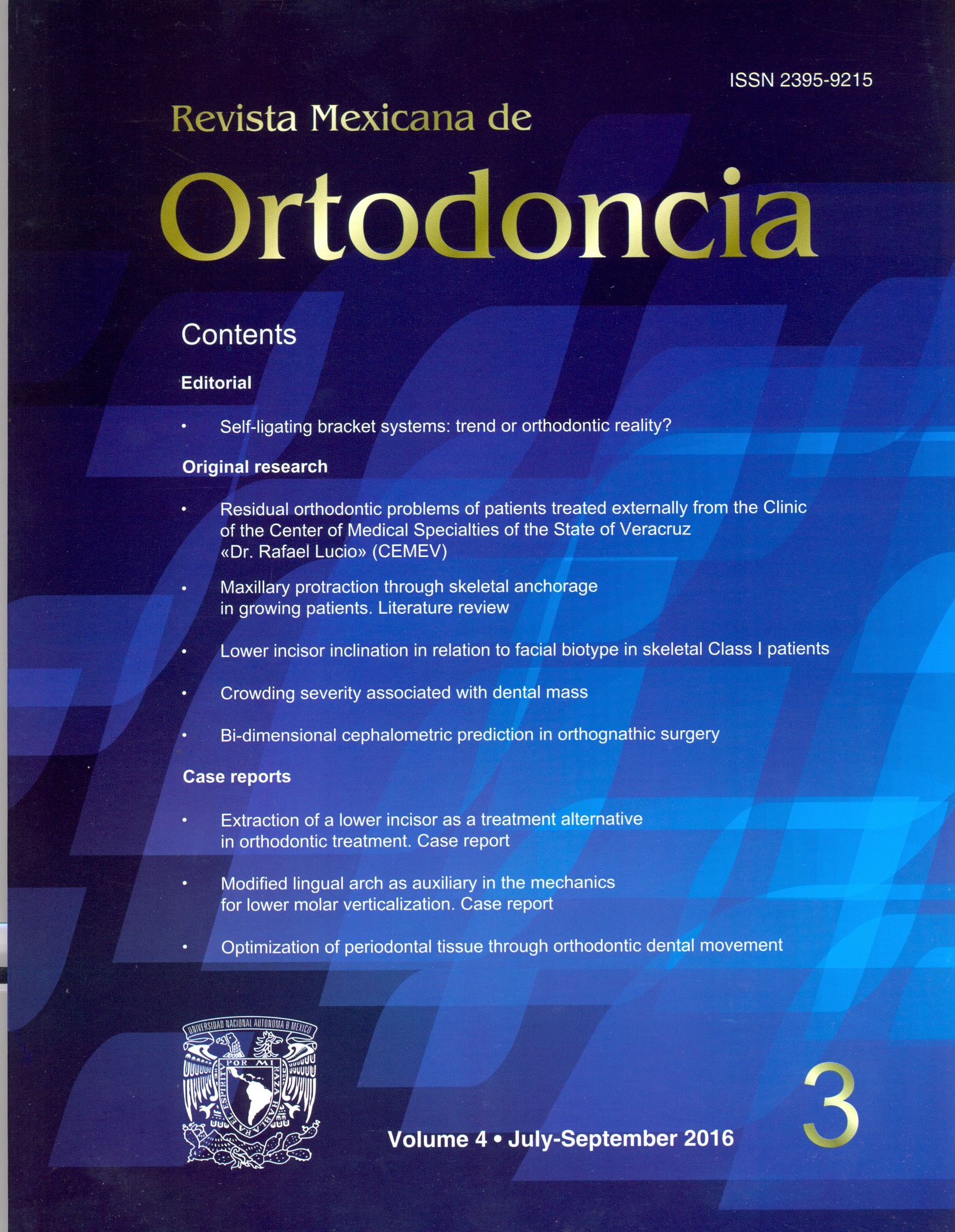Crowding severity associated with dental mass
Contenido principal del artículo
Resumen
Crowding has been classified as one of various types of
malocclusions, which are identified as the third most prevalent
oral disease. It is of great importance in orthodontics to know the mesiodistal length of teeth because it is an determining factor in the diagnosis of space discrepancies of the jaws. Objective: To determine if there is more dental mass associated with an increase in the severity of crowding. Material and methods: A sample of 120 study models with no previous orthodontic treatment was formed. It was divided into 3 groups: 40 with mild crowding, 40 with moderate crowding and 40 with severe crowding. Mesiodistal dental widths were measured in both arches from the right first molar to the left first molar. The information was tabulated in a Microsoft Excel sheet and statistics were performed in StatCalc version 8.1.3 program. Descriptive statistics were calculated and ANOVA tests were performed. Results: The average age was 16 years. In the maxilla, in the severe crowding cases, average tooth mass was 101.34 mm and in the mandible, 93.50 mm. In moderate crowding cases, in the upper dental arch, the average tooth mass was 98.30 mm and in the lower arch, 90.15 mm. In arches with mild crowding an average tooth mass of 95.06 mm was found in the maxilla and of 87.10 mm in the mandbile. When comparing the groups with severe crowding, statistically significant differences in the maxilla and mandible were found. Conclusions: As the crowding severity increases, there is more tooth mass in patients.
